Condensed matter physics
4 July 2019
Magnetic monopoles make acoustic debut!
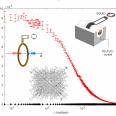
Magnetic monopoles are fundamentally important but highly elusive elementary particles exhibiting quantised magnetic charge. The prospect for studying them has brightened in recent years with the theoretical realisation that, in certain classes of magnetic insulators, the thermally excited states exhibit all the characteristics of magnetic monopoles.
27 June 2019
Machine Learning in Electronic Quantum Matter Visualization Experiments
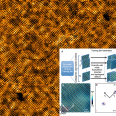
A collaboration of experimental physicists led by Prof. JC Séamus Davis (University of Oxford), theoretical physicists led by Prof. Eun-Ah Kim (Cornell University), and computer scientists led by Prof. E. Kathami (San Jose State University), developed and trained a new Machine Learning (ML) protocol, based on a suite of artificial neural networks (ANN), that is designed to recognize different types of electronic ordered states which are hidden within electronic quantum matter image-arrays.
7 June 2019
Discovery of Field-Induced Pair Density Wave State in Cuprate High Temperature Superconductors
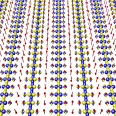
Superconductors are quantum materials that are perfect transmitters of electricity and electronic information. Although they form the technological basis of solid-state quantum computing, they are also its key limiting factor because conventional superconductors only work at temperatures near -270 C. This has motivated a worldwide race to try to discover higher temperature superconductors. Materials containing CuO2 crystal layers (cuprates) are, at present, the best candidate for highest temperature superconductivity, operating at approximately -120 C.
SETI Institute - An introduction to the research & education programs of SETI
Celebrating its 35th year in 2019, the SETI Institute, founded by Astronomers Carl Sagan, Jill Tarter and Frank Drake, has grown from a small research team focused on searching for radio signals beyond our solar system (as a proxy for intelligent civilizations) to an organization of over 90 PhD scientists representing 23 different academic backgrounds, organized into 6 divisions of research. CEO, Bill Diamond, will describe the multidisciplinary structure and research of the Institute, whose mission is to explore, understand and explain the nature and origins of life in the universe.
16 May 2019
Achillefs Kapanidis scoops Innovator of the Year award
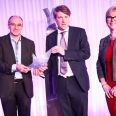
Congratulations to Professor Achillefs Kapanidis and Mr Bo Jing, CEO of Oxford Nanoimaging who have been named as BBSRC’s Innovator of the year 2019 – an award celebrating excellent research which demonstrates impact.
Finance & Physicists Lecture
Finance might appear to be a world away from physics and hence from your life. However, whether you take not of it or not, your daily life is governed by markets. Finance is ultimately the study of markets, specifically seen through a financial lens and the understanding of these has ramifications for everything from how much we are paid to where we live and what is available in the supermarket.
1 May 2019
BTM Willis Prize awarded to Oxford physicist

Dr Roger Johnson has been awarded the BTM Willis prize for his work on the understanding of magnetic and magnetoelectric phenomena achieved through state-of-the-art structural studies of complex crystalline solids. The prize is jointly awarded by the Institute of Physics and Royal Society of Chemistry Neutron Scattering Groups to an early career researcher. Dr Johnson is a Royal Society University Research Fellow in the Quantum Materials section of the sub-department of Condensed Matter Physics.
30 April 2019
New Invention: Control of CRISPR gene editing
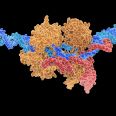
The recent development of gene editing using biological system CRISPR, creates the prospect of dramatic developments in medicine for gene repair and cancer therapy. The CRISPR/Cas9 system allows targeted DNA cleavage and hence editing of the genome. However, unwanted DNA cuts, resulting from non-specific delivery to off-target cells, could promote tumorigenesis. Cell-specific activation of CRISPR/Cas9 is essential to avoid this problem.
Organic Semiconductors: From a lab curiosity to highly efficient devices
Prof Karl Leo, Dresden Integrated Center for Applied Physics and Photonics (IAPP),
Technische Universität Dresden, 01062 Dresden, Germany www.iapp.de
Niamh Coll
11 January 2019
New Invention: Energy microgeneration
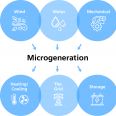
Microgeneration is the generation of power on a small scale – for individual homes, communities or in emergency situations. Microgeneration is also important if you are on the move and isolated from the grid e.g. while boating or in a recreational vehicle. the move – for boats or recreational vehicles. The Oxford Microgeneration System converts mechanical energy from wind, water or any other means into electrical power.


